Hwange – An African Park in Crisis?
Interview with Mark Butcher, Imvelo Safari Lodges
Hardly a day goes by without another depressing story about the plight of Africa’s elephants.
Elephant numbers across Africa are declining at an alarming rate under the onslaught of ivory poachers yet one National Park, Zimbabwe’s Hwange NP, faces an entirely different problem; its elephant population just keeps on growing.
But what, on the face of it, might appear to be good news has become, in fact, an equally serious problem; one that is as much a threat to the elephants’ long term survival as ivory poaching.
To make matters worse, after successive years of poor rainfall, 2016 is shaping up to be an even drier year and Hwange is facing the very real prospect of drought.
To get a better understanding of the situation facing this iconic Zimbabwean park I sought out someone who knows the park and its history better than most; Mark ‘Butch’ Butcher, Director of Imvelo Safari Lodges.
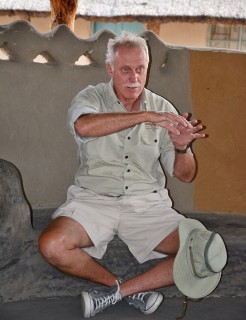 Mark Butcher
Mark Butcher
Butch’s wildlife career started in 1979, when he became a ranger for the Department of National Parks and Wildlife Management. He completed a BSc in Zoology and Botany at Rhodes University, before moving on to work for Zimbabwe’s Forestry Commission. As Provincial Wildlife Officer, Butch was responsible for all the wildlife that roamed within 1.8-million acres of indigenous forest. Whilst undertaking this enormous task, he quickly discovered how essential the local people’s support was to the well-being of the estate. Butch began to develop programs that would both engage the people and benefit the natural ecosystems. He finally left the Commission to develop these initiatives from the other side of the fence. Butch’s lifelong passion for Hwange – it’s elephants, wildlife and communities – formed the cornerstone for Imvelo Safari Lodges to grow into what it is today.
TMD How many elephant are there in Hwange?
MB There’s 44,000 according to last year’s aerial count done by Elephants Without Borders, using rock solid techniques and for the first time ever we counted at the same time as Botswana counted.
TMD So there was no chance of them being double counted if they moved between the two countries?
MB Well, they don’t move that much within a month but there was always that doubt. Anyway the number they came up with, rock solid, 44,000. In fact we, all the old Hwange hands said we had in the low 40’s so it concurs with what we expected.
TMD The natural follow up question to that is: “How many should there be? How many can the habitat sustain?
MB Every single person has a different theory about it.
When Ted Davison came to work here – he came in 1928, prior to that the area had been hunted by informal ivory hunters – he said he had about 500 elephants. If you extrapolate the very good data that we have now, if you extrapolate backwards, we think that there were actually closer to 1,000 elephants when Ted Davison came to work here.
So the question is, ‘is that the number there should be here?’
When I was a young ranger in the early 80’s we used to have – don’t quote me on the exact number – approximately 30,000 – 35,000 elephants here in Hwange.
Heavy elephant culling in the early 1980’s – for better or for worse that’s what was done in the old days – got the numbers down to about 14,000. It was a massive programme; it was argued a lot but, right or wrong, that’s what was done.
Hwange used to work quite well when the numbers were between 14,000 and 20,000. I used to hang around water holes and the pumped water was enough: there wasn’t congestion and the other animals used to flourish; we had a lot more sable and a lot more buffalo then.
We had young trees, young acacia trees. Now, as you drive around the park you’ll see, we have a lot of very big trees and a lot of very, very small ones and nothing in between. Our woodlands are in an absolute nose-dive. Back then
I have heard it argued that we should have elephants at one per square mile, which would be 5,000 elephants because Hwange is 5,000 square miles, or one per square kilometre, which is 14,000 elephants. But clearly 44,000 is unsustainable. So what do we do about it?
TMD Hwange and its wildlife depends on the pumps for water. When you drive around you see there’s no vegetation close to the pumps, it’s like little bits of desert. The pumps create an artificial habitat. If the pumps weren’t there would there be any water? And if not, what would the animals do?
MB I try to rationalise it a lot. I put myself in Ted Davison’s shoes. If you read Ted Davison’s book; here’s a young ranger, one of Africa’s five great rangers of the colonial period. When Ted Davison came to work here he had a couple of lines drawn on a map; this was his park. He walked around in here for donkey’s years and he had the local San people – there were a couple of families of San people lived here – he had them show him around and what he found out within a few years of arriving here was that there was no permanent surface water in Hwange. So he had this huge “game reserve” with no year round water supply.
So what used to happen was that the wildlife that was here during the wet season would migrate out of the park during the dry season. What started to happen for him in the early 30’s as a young ranger he saw he was looking after his animals, he was stopping the uncontrolled hunting, he was getting on top of things but every year his animals would migrate out and when they migrated out the next rainy season when they came back there were fewer and there were lots of them wounded and there were all kinds of major issues because what was happening during the same period was that human populations were building up around the park.
So, he decided to put some windmills in to pump water in the dry season so that his animals wouldn’t have to migrate out and then he could look after them; they would be in his protection year round. It worked brilliantly, maybe better than he ever expected. He started putting windmills and, slowly but surely, elephants started staying and flourishing. Gradually they became sedentary.
By the 1960’s his windmills weren’t keeping up; they weren’t pumping enough water because the elephant population so increased. I say elephants but it wasn’t just the elephants; elephants, buffalo, giraffe, all the wildlife flourished under his stewardship and he started pumping more and more water. Then his windmills couldn’t keep up and he had to start using engines. By the late 1960’s we had this huge conservation success story where the elephant population has been taken from between 500 – 1,000 up to 20,000.
We’ve got people flying from all over the world to see Hwange’s wildlife but it’s essentially all artificial; it’s all pumped.
Fast forward now to the 1980’s. The elephant population is still flourishing. When I was a young ranger here we had 60-70 water pumps and a huge elephant population. So back then, the powers that be and the ecologists said we needed to cull. So they culled the elephant population back down.
Then the culling was stopped because by 1992 there was an ivory ban, no trade in ivory, ivory couldn’t be sold to fund the culling, which was a good thing. We had the elephant population down to where we wanted it.
Come back to the early 2000’s and what we’ve got is an elephant population that has blossomed.
Not only has our local population increased but we’ve drawn in elephants from Botswana and the population is back up around the low 30,000’s and at the same time the Department of National Parks and Wildlife is going into a nose-dive financially because of the collapse of the Zimbabwe dollar. So now they can’t fund their operations.
By now we’ve already started Bomani Lodge which has been our pipe-dream to get lodges on the periphery of the park. We’re in the south east corner of the park, we have a small waterhole by our camp, we have a couple of hundred elephant come to drink each day and the whole thing is starting to come together.
Suddenly, in the dry season of 2002, probably about June/July of that year, I suddenly had a monstrous influx of elephants come pouring into our waterholes, literally thousands. I had 2 or 3 thousand elephants arrive to come and drink at a waterhole where previously we’d had a couple of hundred. Knowing what was going on in the park I said “I know what’s happened, they’ve switched the water off inside the park.”
I went deeper into the park, down along the old pumps runs I used to do as a young ranger and sure enough they’d all been abandoned.
Clearly this wasn’t something I could walk away from. I couldn’t just let these animals die, nor could I let them devastate the area around our camp. I had to do something; so we started pumping the water to buy ourselves breathing space until we could get on top of things.
I know full well that pumping water is not the answer, because we’ve created an artificial system. My problem today is that I’ve been handed this artificial situation and what do we do with it?
People say “you should do this and you should do that”. One of the options that are on the table is to turn off some of the waterholes. Now I know from experience that turning off just a few of the waterholes doesn’t achieve anything because the elephants just move. They just crowd the others, they go to waterholes that are being pumped.
What you do kill is animals like warthogs and baboons that have become dependent on certain waterholes and don’t know where the other waterholes are. They are not migratory.
So, turning off a few waterholes doesn’t work. What we’re faced with is we have to turn off ALL the waterholes or nothing.
TMD Are there people who argue that would be a more natural state of affairs?
MB Yes. What is interesting and which follows on from that is; we could recreate the old Hwange with 500 – 1,000 elephant, 2-3 prides of lions, half a pack of wild dogs, 2-3 cheetah, 10 sable, 5 giraffe. But what would happen is that there would be no tourism.
Whether we like it or not, Africa’s game reserves, National Parks and wildlife survive on the back of tourism. If there is tourism and tourism dollars coming into an area there is a moral justification to the people of Africa of why they should set aside land for wildlife.
In the absence of the animals, why would people come to Hwange? They wouldn’t come. So there would be no tourism dollar and people would think: “Why don’t we just open up the area for grazing our cattle? Why don’t we just kill those 5 sable because we’re bloody hungry?” And we would lose Hwange National Park.
The second thing is that we’ve spent a lot of time developing the communities around the park to become dependent upon the park. So if we turn off the water inside the park it will potentially kill off all the animals but we’re also going to devastate the communities.
TMD How much impact does such a vast population of elephants have on other species?
MB In my opinion we don’t have enough scientific study done on the elephant in our park. People go for the sexy animals; the wild dogs, the lions; but clearly the elephant is the most important animal in our National Park. They comprise over 90% of the biomass but we don’t really know what’s going on.
What we do have anecdotal evidence, from old men like myself. I remember we used to see herds of 100+ sable in the park; to see herds of 3,000 – 4,000 buffalo was not uncommon. We would see big herds of eland, 500-800.
You just don’t see that any more. When I go round with the young guys, guys like Vusa, and we see a herd of 70-80 eland Vusa jumps up & down with excitement. When we see a herd of 200 buffalo it’s “Oh man, we saw 200 buffalo.”
I know a lot of that is down to competition with the elephant; because what is the single limiting factor on Hwange’s wildlife is the water at the end of each dry season. Hwange is a paradise for 9 months of the year; for 3 months of the year it’s a tough dry season environment with fantastic game viewing, but difficult if you’re an animal trying to survive.
Once every 5 years you get that dry season where we have drought and the last month of that dry season is incredibly tough. Let’s say Hwange is down to around 40 functioning waterholes, with 44,000 elephants drinking there. By the time we get to the end of that season we’ve been working hard; all of our engines, all of our equipment tied together with pieces of string. We’ve got more and more breakdowns as you get later and later into the dry season so by the end of October you’ve often only got something like 15-20 functioning waterholes.
By the time you’ve only got 15-20 functioning waterholes you’ve got something like 2,000 – 3,000 elephants trying to drink at each waterhole. When you have 100 elephants around each waterhole 24/7 the other stuff can’t drink. That’s when the sable herds get absolutely devastated and the buffalo are struggling and everything else struggles too.
TMD Because the elephants take so much of the vegetation other species that need food and water and can’t really travel the distances between the two are going to struggle.
MB Yes, absolutely. Elephants have got long legs, warthogs have got short legs. Elephants can walk 20-30 kilometres to feeding grounds and walk 20-30 kilometres back; warthogs can’t. Warthogs die.
TMD How do you think the elephant population could, or should, be managed?
MB I know how they used to do it in the old days. Clearly and critically that’s not politically acceptable. I believe that if they tried to do it in the old dinosaur way of going and culling Hwange’s elephant again the backlash from tourism would be massive. Our tourism dollar would collapse and Hwange would collapse anyway. So culling is not an option.
We know that contraception is not an option.
We know also that the old migration routes are essentially closed. The migration routes that are open have been occupied, the routes to the Chobe river, the Zambezi river are full up. Chobe’s got as many elephant as we have, maybe more.
There’s a lot of talk about going back to the old way of migrating around the place, that’s not going to happen. The migration routes that are open to elephant have already been taken up.
When Ted Davison came to work here Zimbabwe had a human population of quarter of a million, we’ve now got 14 million people.
We know that we can’t just turn off some of the water, so we’d have to turn off all of the water. If we turn off all of the water there will be a collapse of tourism. I believe that there is no single magic solution.
I also believe it may come down to some kind of a combination of different things; a whole different management regime.
Now I do know that what I know is not enough. I really, really, really would like to see some serious science and some seriously big brains, and some serious dollars brought in Hwange to try and look at this problem. Because essentially we have one of Africa’s greatest parks, we have one of Africa’s greatest elephant populations in a continent where elephant populations are collapsing and we are faced with potential disaster.
TMD So even a partial cull, a small cull, is just too unacceptable to conservationists, even though it would be killing some to save the majority.
MB I know that as a young ranger in the 1980’s we were fighting and dying protecting elephants. I had friends that were killed fighting elephant poachers. We put our lives on the line frequently looking after these animals.
We worked our backsides off pumping water for them. When I was a young ranger, if you let a waterhole go dry it was a dismissable offence, you got fired, your career was over. That’s how seriously it was taken.
Now, in that environment the ecologists came to us and said “Guys, we believe there are too many elephants and these are all the reasons. We don’t know of anything else to do other than cull the elephants. We think that if we’re wrong the elephant populations will bounce back quickly but if we leave it without doing anything the woodlands will take hundreds of years to recover. So we’ll decide in favour of reducing the elephant population.”
When those things were brought to us my bosses, I was a young cadet ranger, but my bosses almost had fist fights over going out and shooting elephants in those kind of numbers. Nobody wanted to do it, and everybody was dead against it, we thought they were wrong. But the ecologists convinced my bosses that that was the way to go. But it required a massive cull.
I don’t know what the western world, where our tourism dollar comes from, would say if they said that 20,000 elephants need to be shot.
We know that 44,000 elephants increase at around 5% per annum, that’s about 2,000 elephant a year. So we know that just to hold the population they would need to kill about 2,000. We do know that in very bad drought years we lose a couple of thousand but clearly some significant numbers would need to be culled and clearly that’s not acceptable. Those days are gone now, we have to start looking for other solutions; I don’t know what they are.
I would love to see some science and brain power brought to this debate because I believe there could be something out there that we haven’t thought of.
TMD How bad is poaching here in Hwange?
MB We have two kinds of poaching.
We have subsistence poaching: In a really tough year someone from one of the communities beside the park sneaks into the park and kills a duiker to feed the family. We have that level of poaching which I believe we can live with.
When I was a young ranger if we saw that kind of thing going on we didn’t necessarily go after those guys hot foot. The guys we went after hot foot were the commercial poachers.
The commercial poachers were the guys who were stealing wire and putting up huge snare lines and killing big numbers of buffalo and wildebeest and damaging elephant and then of course the commercial ivory and rhino poachers who were coming in armed. Very few of them at that time were from Zimbabwe, most of them were coming from outside the country. Some from as far afield as the Congo and Sudan. And those were our major serious, serious problem.
Now in Hwange today we’ve got a very similar meat poaching problem to what I remember from back in the old days. What we’ve also got is an upswing in elephant poaching, the likes of which we’ve never seen.
The elephant poisoning incident in 2013 was the worst case of elephant poaching we’ve ever had in the history of this park. We put paid to those guys, most of them went to jail, we stopped the situation. We’ve opened our camp down at Jozibanini, the old ranger station there and we’re kind of keeping a lid on it. But now there’s an influx of armed poachers into Hwange.
What is interesting is that this year more elephants will die of starvation in Hwange National Park than will be poached in Hwange National Park and yet we got more elephant poaching going on in Hwange than we’ve ever had. But it’s not nearly the problem that it is in East Africa.
TMD Is it local now, or are the poachers – the commercial ones – still coming from outside?
MB We’ve got two kinds coming here. We’ve got the guys coming from outside who we call Zambians because they are coming from Zambia but they’re not necessarily always Zambians and then we have out of work, often military types, from Zimbabwe who know how to handle themselves, how to handle weapons in the field, they’re getting involved in it.
Before, in Zimbabwe it wasn’t that easy for a guy with a set of ivory to get rid of it. You can’t walk into Bulawayo or Harare with a set of 50 pound tusks and wander round trying to sell them. It’s not an easy thing to hide.
In East Africa the guys used to just take down to the coast and slip it onto a dhow and move it out. That’s why there was so much poaching there.
What has happened in recent years is we’ve had a big influx of companies, mainly coming from China, a lot of them involved with mining etc, and now suddenly there is a source market for ivory here.
So we have two issues: There’s been an increase of experienced men with guns within the country and now they’ve got a way to move ivory. That I believe is what’s fuelling our current ivory problem here.
TMD In general, how supportive of the park and its wildlife are the communities that live on the periphery? Here at Ngamo you are in one corner of the park and you have excellent support from the local communities, how is that replicated in other areas of the park?
MB If you put communities on a scale of 1 to 5; where a community that does not poach, works really well with the parks people, the guys are involved with the safari lodges, they’ve got an income from tourism would be a 1.
At the other end of the scale a community that dislikes the national park, hates living next to it, hates wildlife; if they had a chance to vote they’d say ‘let’s kill all elephant, all the lion because we don’t like them’ – would be a 5.
I would suggest the communities around our park, on the Zimbabwean side, only 10% of them are a 1.
I would say probably 20% -30% are a 5 and the rest are intermediate.
We have shown with some of the communities around us what can be done; our challenge over the next 5-10 years is to expand that model all the way around the boundary of Hwange National Park. We don’t have communities living on the park boundary all the way around but certainly on our most problematic boundaries, particularly the southern boundary, we do.
TMD Does that mean other operators would have to adopt a model similar to yours or is that something that National Parks would have to get behind?
MB It think it is a combination and I strongly think it is something driven by the tourism dollar. If you are a responsible tourist you should make sure that at least one of stops on your itinerary is one of those peripheral lodges – at any of the parks in Africa – that are supporting local communities and are involved with the local communities.
I think we need the tourism dollar to be behind it, I think we need operators to be behind it and I think we need National Parks and government to be behind it. I know from our own experience at Bomani, Camelthorn and Gorges that we can make it work when everybody gets behind it and we can push it forward.
TMD Given that they are badly underfunded, is there much initiative coming from the Parks Department to try and involve communities and deter them from working with poachers?
MB On the ground, the guys I work with give me a lot of support and I think that given more resources they would give us more support. I know that the responsible rangers and managers on the ground within the park here are more than happy to help us out wherever they can but their hands are pretty full just looking after their park.
I think there’s a lot of synergy needed; where they’ve got their hands full responsible operators should be picking up the ball where our parks department can’t. I obviously would like more support from parks department but there is a limit to the support they can give us.
TMD Your prediction for the next five years for Hwange?
MB I think Hwange is under the biggest threat it has ever been under.
Firstly from our massive elephant population. Secondly from the massive threat of elephant poaching that is looming. But I really am a glass half full guy; I really am quietly confident that this is a fight we can win.
We’ve got a lot of good responsible operators on the ground here, we’ve got a lot of communities that are coming onside and we’ve got tourism dollars. Responsible tourism is really beginning to understand this kind of thing and responsible tourism is getting behind Hwange again.
I really am quietly confident. I think we’ll take some knocks, it’s going to be hard and there will a lot of ups and downs but I’m quietly confident that Hwange is still going to be a place that you’ll want to come to 5 or 10 years from now.
TMD Presumably with tourism to Zimbabwe regaining popularity that position should strengthen?
MB Yes. I think as people understand more and more what is going on in Zimbabwe and understand more and more what is going on in Hwange they understand how abandoning Zimbabwe is not the answer. Particularly if you are concerned about the wildlife, because if you abandon Zimbabwe you are abandoning the wildlife.
The amount of resources I can throw at looking after elephant and looking after communities and looking after poaching problems become less and less if I have less tourism dollars to work with, it’s very simple mathematics.
As more people look to visit Zimbabwe it gives us more clout. It gives us more clout with government too. Suddenly if we are a bigger industry than we were five years ago we can go to government and say “Hey guys you need to listen to us, this is how we need to do it.”
And they do listen. They don’t always listen to everything we say but they do listen, which gives us more confidence for the future.
Our interview with Mark Butcher was conducted in Hwange in September 2015. At that time the park had experienced 2 successive years of lower than average rainfall and needed the 2016 rains to be good. Sadly, at the time of going to print (Feb 2016) those much needed rains have not yet materialised and Hwange’s wildlife is facing tough times ahead.
Want to know more about Hwange National Park?
Check out these links:

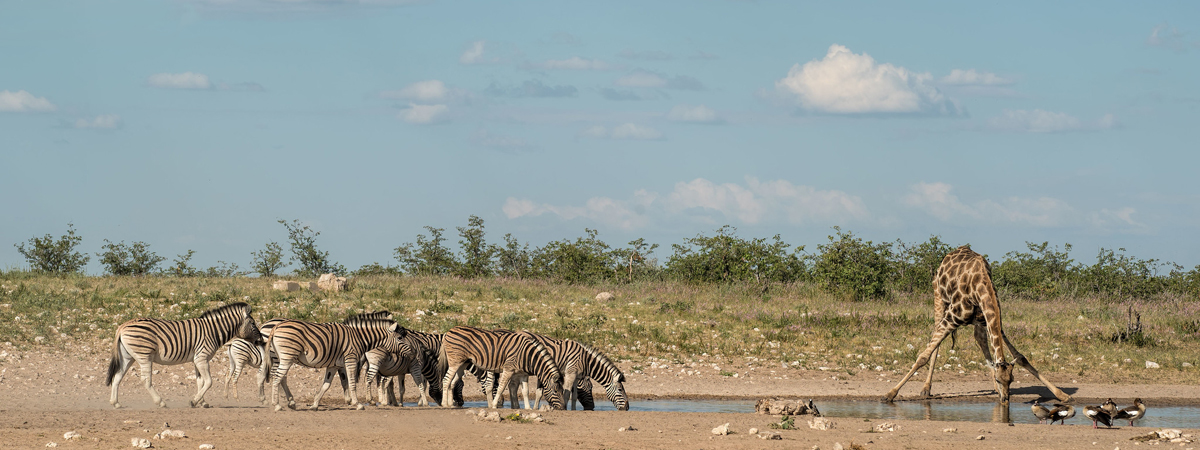
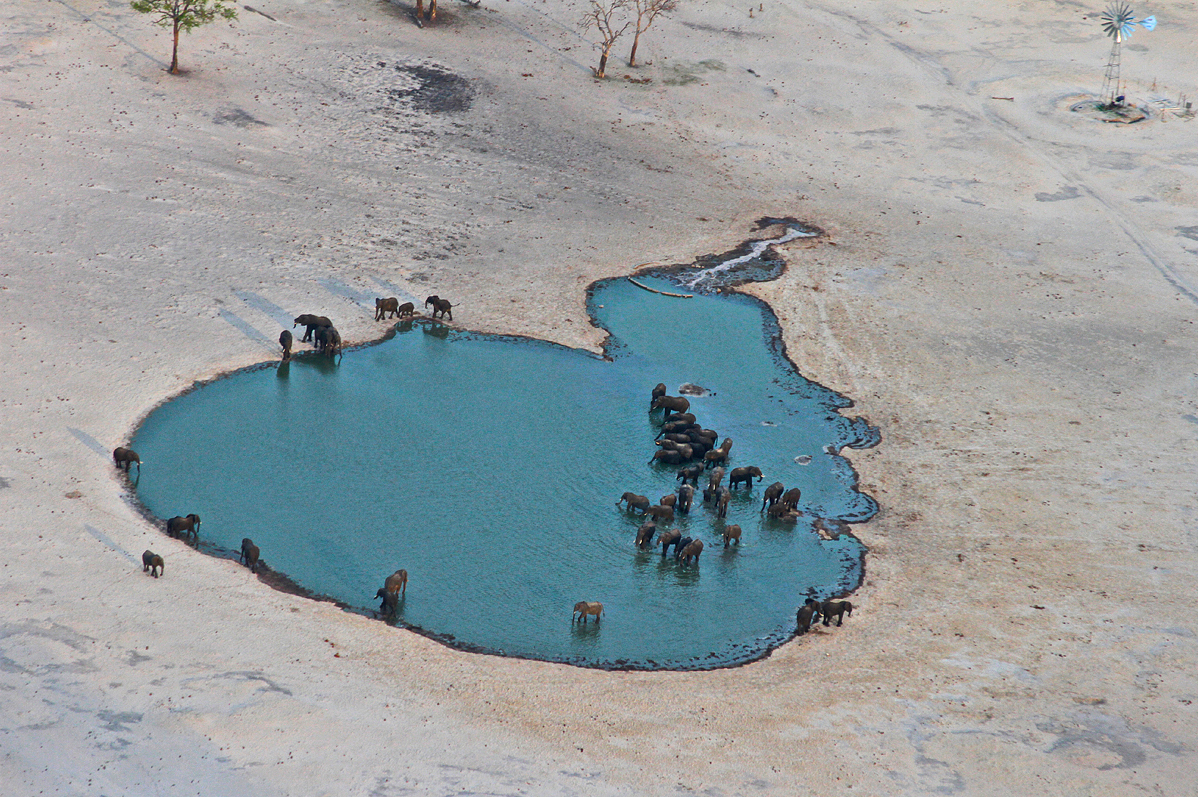
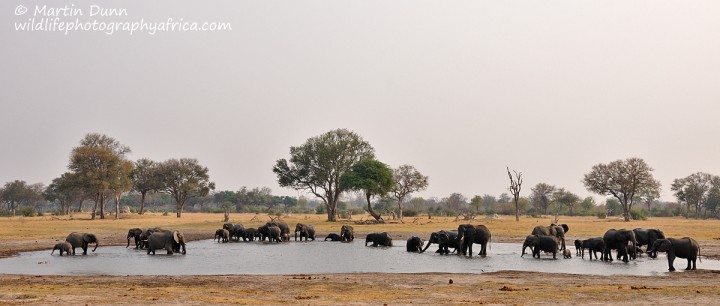

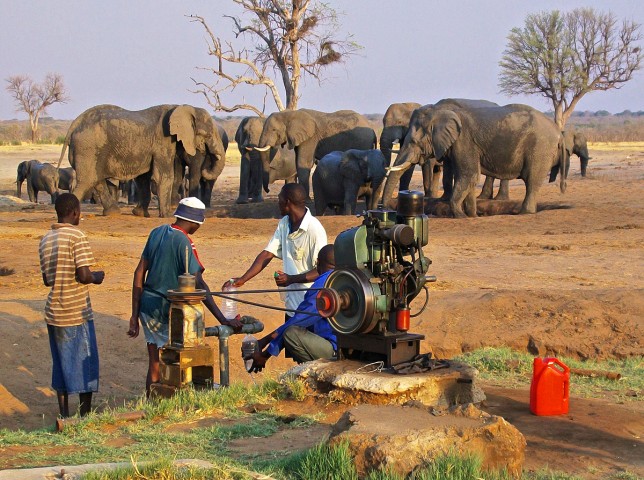
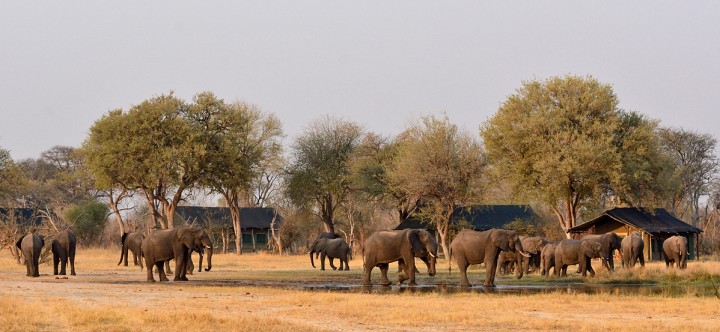
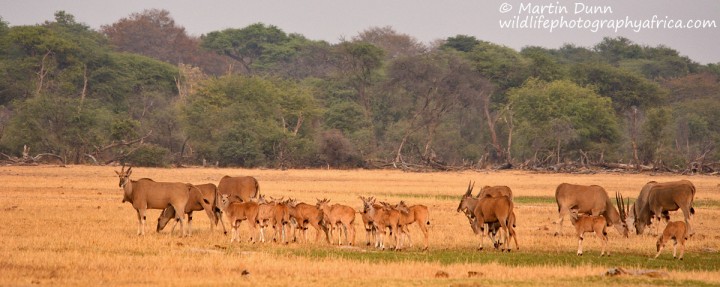
i would like to know on the adoption and implementation of eco-tourism by Imvelo Safari
You’ll find all the information you need here https://www.imvelosafarilodges.com/ecotourism.html